Big Hadron Collider with your own eyes. Part 4
In the final part I want to talk about what usually remains behind the scenes, but is a direct part of the creation and use of the equipment on which discoveries are made.
The first part is here
The second part is here
The third part is here
Part 4. Workshops and laboratories
During the open day at CERN, visitors could see the places where equipment was created and debugged, various detectors, and also visit the laboratories. The basis of everything, of course, is accelerator technology

and various detectors.

It can be seen how the detector of individual particles, created on the basis of CMOS technology, monitors cosmic radiation in real time.
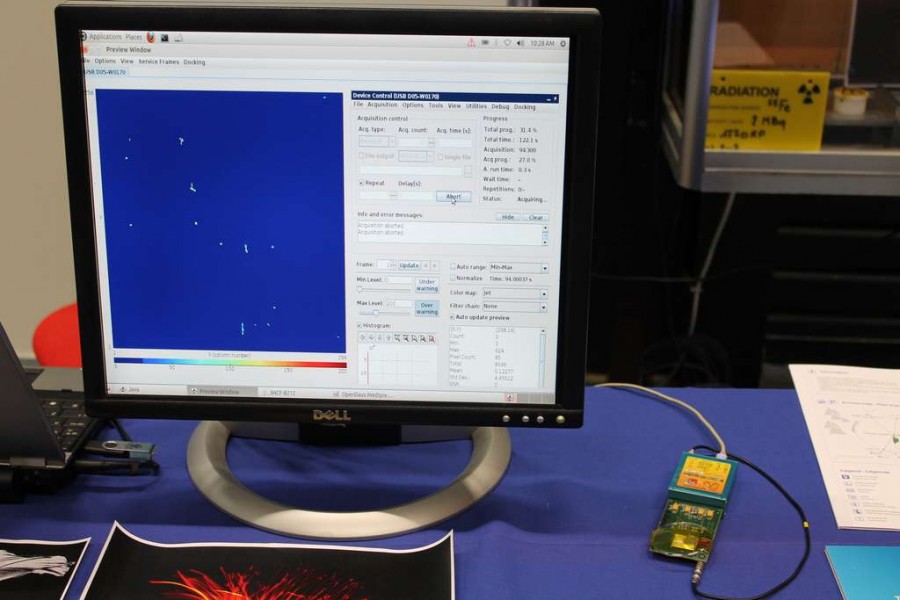
Going further, we find ourselves in workshops where a large number of various specific equipment is created.

Here, for example, a proton separator, which is intended for use in an accelerator.

And this is another squiggle, the purpose of which I did not understand.

In general, I must say that the workshops are equipped with the most modern machines , although there are quite ancient (visible in the background)

Modern machines are used for automatic precision machining of parts without human intervention. For example, this high-tech machine grinds the bust of a hero twice for installation in his homeland.

Since some equipment must work in a vacuum, it is tested in such a chamber
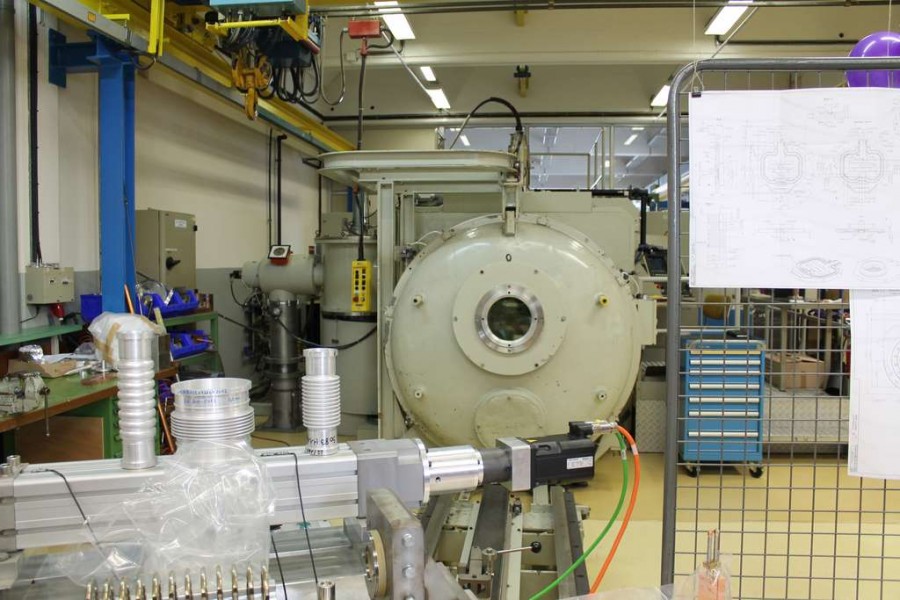
We will go further to the largest building in CERN - a place where they establish and test the most important part of the collider - particle detectors.

Here, the employees arranged a small exhibition. Here, for example, is a real beryllium target for protons.

And this is a quadruple magnet. I

must add that employees conduct excursions and explain to ordinary citizens the physical principles of each exhibit.
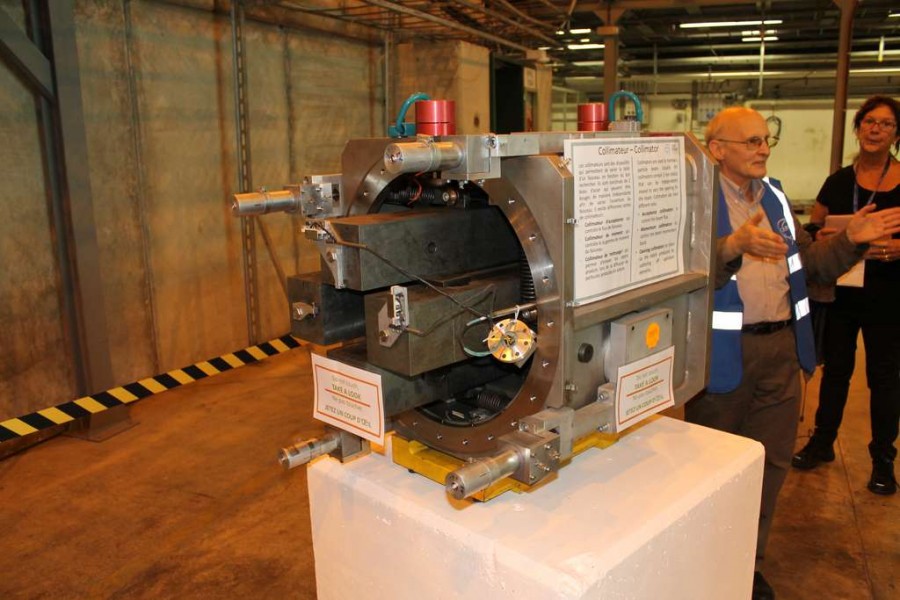
I’m not sure that people understand the essence of the matter, but everyone is still interested.
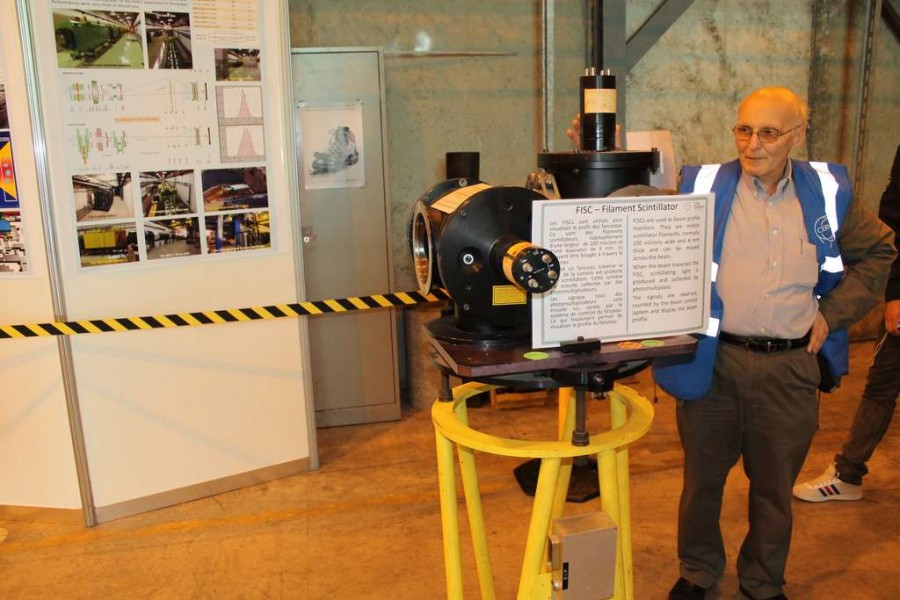
This is a particle detector consisting of many planes bent into an accordion

And this is a prototype of a detector containing many wires that create a magnetic field. This detector is then filled with gas. When a particle enters such a detector, the gas is ionized and the ions drift under the influence of an electric current to the walls of the detector, where they are recorded. Knowing the magnitude of the electric field, it is possible to determine the trajectory of a charged particle. I
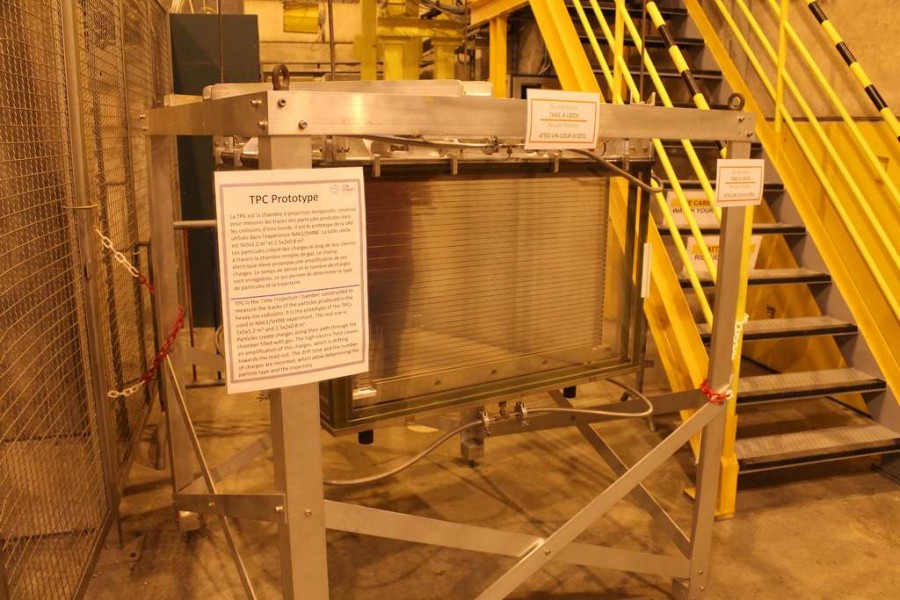
must say that in this building you can simultaneously debug a lot of different equipment. In order not to interfere with each other, these concrete blocks are laid.

Many measuring instruments are visible.

Let's look into the cryogenic laboratory. As is known, the operation of superconducting magnets requires a temperature close to absolute zero. For cooling, liquid helium is used. With the use of helium (and partially liquid nitrogen), a real idea was made in this laboratory.

For example,scientific sorcerers made a piece of magnet fly.
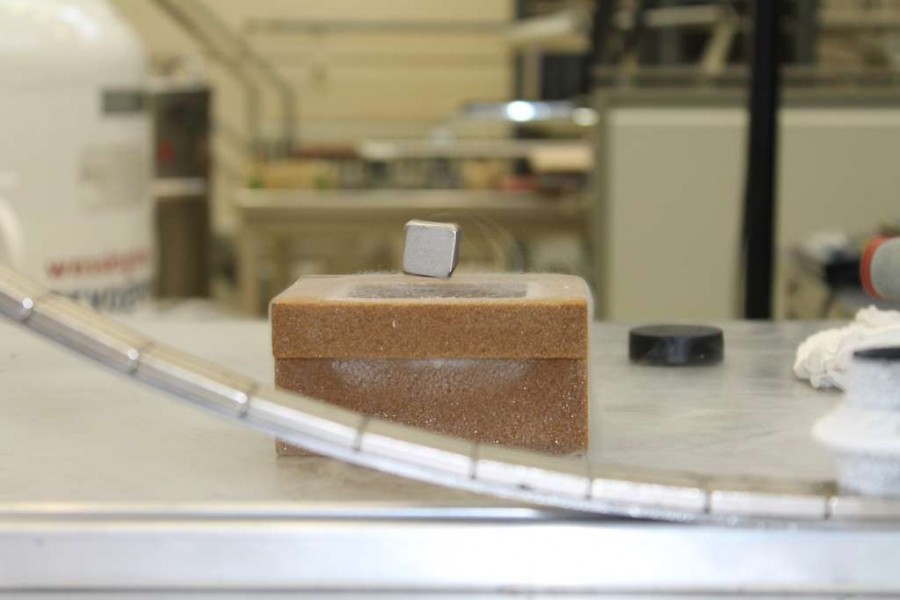
But this is a phenomenon that, according to the presenters, not even most physicists saw with their own eyes, not to mention about ordinary people - superfluid helium. Yes, not every day you see a purely quantum effect.
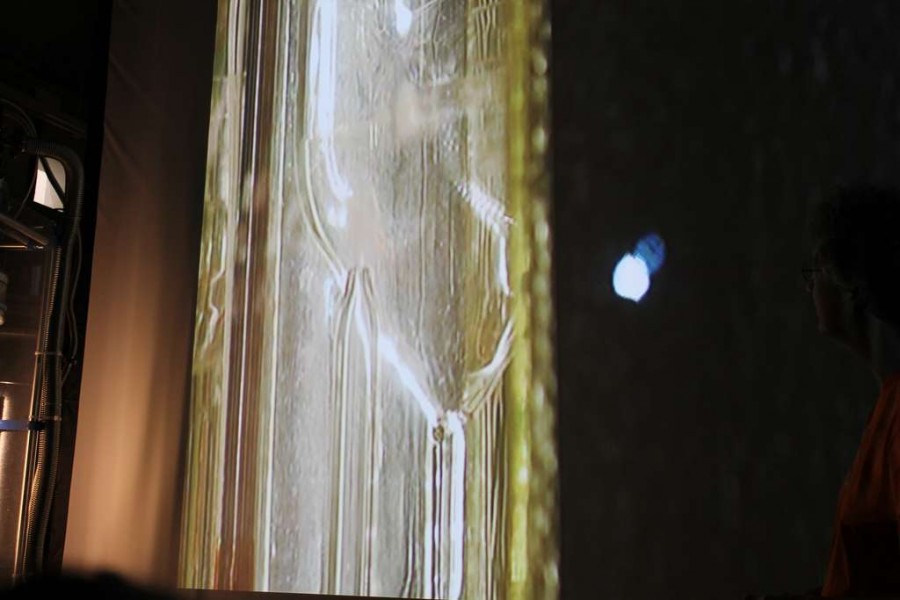
Going into the next building you can see the synchrocyclotron. True, it no longer works.

Such remotes are well known from old films about physicists, when this profession was still held in high esteem in our country.

This is me on the background of the synchrocyclotron.

On this my stay at the open door at CERN came to an end. I also visited this futuristic building, where a film was shown on several screens (like a circular cinema panorama at VDNH, who remembers) about the origin of the universe and how the Large Hadron Collider helps in studying nature at the most fundamental level.
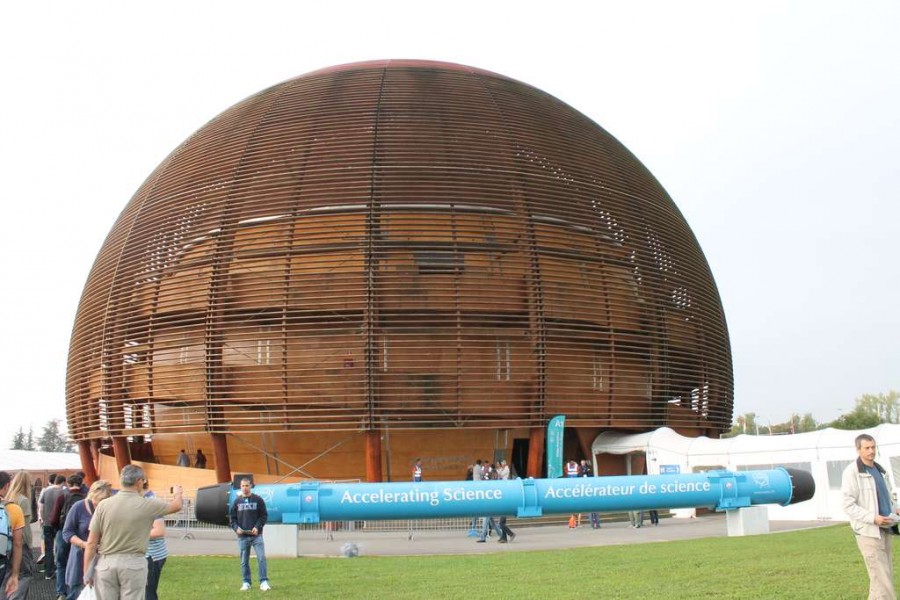
I would also like to add a few words from myself. From my point of view, organizing such an event as an open day was worth a lot of money and huge efforts of the employees, and I take off my hat and applaud the organizers. This is an example of how science should show what it does and why it is necessary to spend so much money on the study of nature. I hope our scientists will take note of this. In addition, today less and less young people choose physics as their future profession and such events as nothing else can inspire them to study the most interesting science of nature.
The first part is here
The second part is here
The third part is here
Part 4. Workshops and laboratories
During the open day at CERN, visitors could see the places where equipment was created and debugged, various detectors, and also visit the laboratories. The basis of everything, of course, is accelerator technology

and various detectors.

It can be seen how the detector of individual particles, created on the basis of CMOS technology, monitors cosmic radiation in real time.

Going further, we find ourselves in workshops where a large number of various specific equipment is created.

Here, for example, a proton separator, which is intended for use in an accelerator.

And this is another squiggle, the purpose of which I did not understand.

In general, I must say that the workshops are equipped with the most modern machines , although there are quite ancient (visible in the background)

Modern machines are used for automatic precision machining of parts without human intervention. For example, this high-tech machine grinds the bust of a hero twice for installation in his homeland.

Since some equipment must work in a vacuum, it is tested in such a chamber

We will go further to the largest building in CERN - a place where they establish and test the most important part of the collider - particle detectors.

Here, the employees arranged a small exhibition. Here, for example, is a real beryllium target for protons.

And this is a quadruple magnet. I

must add that employees conduct excursions and explain to ordinary citizens the physical principles of each exhibit.

I’m not sure that people understand the essence of the matter, but everyone is still interested.

This is a particle detector consisting of many planes bent into an accordion

And this is a prototype of a detector containing many wires that create a magnetic field. This detector is then filled with gas. When a particle enters such a detector, the gas is ionized and the ions drift under the influence of an electric current to the walls of the detector, where they are recorded. Knowing the magnitude of the electric field, it is possible to determine the trajectory of a charged particle. I

must say that in this building you can simultaneously debug a lot of different equipment. In order not to interfere with each other, these concrete blocks are laid.

Many measuring instruments are visible.

Let's look into the cryogenic laboratory. As is known, the operation of superconducting magnets requires a temperature close to absolute zero. For cooling, liquid helium is used. With the use of helium (and partially liquid nitrogen), a real idea was made in this laboratory.

For example,

But this is a phenomenon that, according to the presenters, not even most physicists saw with their own eyes, not to mention about ordinary people - superfluid helium. Yes, not every day you see a purely quantum effect.

Going into the next building you can see the synchrocyclotron. True, it no longer works.

Such remotes are well known from old films about physicists, when this profession was still held in high esteem in our country.

This is me on the background of the synchrocyclotron.

On this my stay at the open door at CERN came to an end. I also visited this futuristic building, where a film was shown on several screens (like a circular cinema panorama at VDNH, who remembers) about the origin of the universe and how the Large Hadron Collider helps in studying nature at the most fundamental level.

I would also like to add a few words from myself. From my point of view, organizing such an event as an open day was worth a lot of money and huge efforts of the employees, and I take off my hat and applaud the organizers. This is an example of how science should show what it does and why it is necessary to spend so much money on the study of nature. I hope our scientists will take note of this. In addition, today less and less young people choose physics as their future profession and such events as nothing else can inspire them to study the most interesting science of nature.
